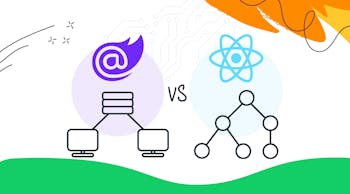After long nights and countless hours of brainstorming, jotting down hundreds of ideas, and drinking probably way too much coffee in the process, you’ve finally decided to build your dream app. You know everything that the app will do, who it will serve, what goes where, the features, and specifications. That’s so exciting!
But did you think about the tech stack for your app? What platform are you going to build your app for? Which technology are you going to use? What framework is going to complement your app specification?
I know I just threw a lot of questions at you, and if you don’t know the answers to any of them, don’t worry. By the end of this blog, you’ll have a clearer picture of the type of tech stack you need specifically for the kind of app you want.
But before we begin, let’s address the basics.
WHAT IS A MOBILE APP DEVELOPMENT TECH STACK?
Simply put, a tech stack is the combination of programming languages and software products that are used to create a functional mobile or web app.
Technically, the entire mobile app development tech stack can be divided into three areas:
- Frontend Development — The interface that the user interacts with on the mobile app.
- Backend Development — This part takes the user input, processes it, and converts it into a positive output.
- Development Platform — This is where interfaces and libraries come together to design and develop the mobile app.
There are a bunch of elements that rely on the selection of the right tech stack for your mobile app. Things like whether or not your app is robust or scalable to different operating system versions, for example, rely heavily on the tech combination you choose. Your tech options for mobile stack also depend on the platform that the app is targeting: Android, IOS, and cross-platform (both Android and IOS).
Any wrong decision can dramatically affect its current performance and future growth opportunities — and not in a good way. This is why it’s so important to choose the right tech for your mobile app from the get-go.
Now that you know what a mobile app tech stack is and why it’s important to choose the right one, let’s briefly go over how you can do that.
HOW TO CHOOSE THE RIGHT TECH STACK FOR MOBILE APP DEVELOPMENT
Trying to suggest a prefix set of app technology for all projects is like me trying to resist an extra shot of pumpkin spice syrup in my morning latte: impossible.
Every app is unique and has its own requirements. The same applies to your startup and the team that’s coding the app. Instead of simply copying the tech stack used by other apps, you’ll want to start by considering some crucial factors:
App Considerations
Many factors can vary from one app to another:
- The device on which the app would function.
- The network condition it would run in.
- The user experience you are aiming to achieve.
- The estimated go-to-market time.
- The platform it would run, amongst others.
All these app elements sandwiched together help decide the framework, library, languages, and software that would be combined to develop the app.
Goals of the App
Your go-to tech stack for mobile app development also depends on the overall goal that your mobile app will achieve.
For example, suppose a mobile app depends more heavily on load processing. A robust tech stack will work better than a mobile app that functions around interactions that are streamlined.
Skill Set Of In-House Development Team
Introducing a mobile app development tech stack that your team is comfortable with will help speed up the process and decrease overall costs while also not skimping on the quality. Two huge plusses in our book.
Data Safety & Security
Data safety and security are crucial regardless of which platforms you’re building the app on.
Thankfully, every popular mobile app technology has built-in security features. The problem is choosing one that is properly documented and with a leaner, cleaner framework. It’s also a good practice to select a toolkit that doesn’t require writing lengthy codes because, really, who wants to do that?
Compatibility With Current Technologies
When it comes to choosing the right tech for your mobile app, compatibility is key. It’s crucial that you not only have a tech stack that matches your current technology, but you should also check the compatibility of your tech stack with the tools you’re planning to incorporate into your app to make sure they jive. Including tech stacks that will allow your app to run on multiple platforms is also crucial.
Development Timeline
When it comes to creating and implementing mobile apps, timing is everything. On Google Playstore, an average of 113,000 apps were released per month in 2020. That shows how incredibly competitive the industry is and why it’s important to choose mobile development technologies that best support your development timeline.
Why wait years to have your app fully developed when it can be done in months, giving you the clear upper hand on your competition? It’s really a no-brainer.
FINAL NOTE
We hope that this blog helped you understand a little bit more about what a tech stack is, the importance of choosing the right one for your mobile app, and how to do that. With these tips, you'll be able to navigate the vast sea of options, not get caught in the shuffle or lose sight of your goals, and crush the competition.
If you’re looking to build your dream app but aren’t quite sure where to begin, let’s chat! We’d love to help put you on the path to app success!









